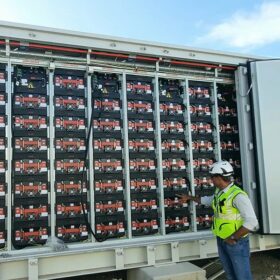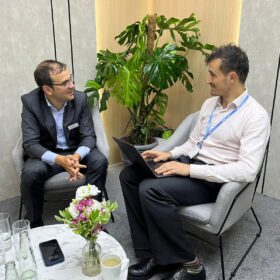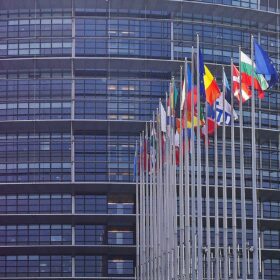The Hydrogen Stream: Microorganisms affect underground hydrogen storage
Researchers from China University of Petroleum have reported on hydrogen-microorganism interactions in underground storage, while Sungrow Hydrogen has won a $4.1 billion bid for an integrated hydrogen, ammonia, and methanol project.
Fire brigade extinguishes fire at new hydrogen refueling station in Germany
Firefighters in Gersthofen, Germany, have extinguished a fire at a hydrogen refueling station that was inaugurated on June 17 as part of a pilot project supported by the German government.
Midsummer to begin production of thin film cells in southern Italy after summer
The “largest European thin-film solar cell manufacturing plant” will begin operation after receiving production certification. Midsummer executive Erik Olsson tells pv magazine Italy that production is expected to start after the summer, at a time of sharp increase in demand for thin-film photovoltaic cells from the commercial and industrial solar segment.
Sosteneo, Enel finalize partnership for 1.7 GW battery storage rollout in Italy
The Generali Group company has signed an agreement to acquire a minority share of Enel Libra Flexsys, which aims to roll out 1.7 GW of battery energy storage projects in Italy. “Revenues are fully contracted for 15 years through capacity agreements with Enel as well as capacity payments from Enel that are backed by Terna, Italy’s transmission system operator,” Sosteneo says.
Pope Francis orders agrivoltaic plant to provide Vatican with ‘complete energy sustenance’
In the apostolic letter “Brother Sun,” the pontiff announced the agrivoltaic system for the “complete energy sustenance” of the country. The plant will be built in the countryside of Rome’s 49th district.
The Hydrogen Stream: Rolls-Royce unveils hydrogen combustion engine for CHP
Rolls-Royce has started developing a hydrogen combustion engine for combined heat and power (CHP) systems in Germany, while Lhyfe has installed a 1 MW electrolyzer for Deutsche Bahn.
Sungrow executive dampens hopes for imminent storage boom in Italy
Javier Izcue, vice president SG Europe at Sungrow, tells pv magazine that Italy will install 30 GW of batteries by 2030, but notes that the boom is not looming in the near term, as previously predicted.
Green Deal will remain after EU elections, just with different marketing, says analyst
In an interview with pv magazine, Linda Kalcher, executive director at European think tank Strategic Perspectives, described the possible consequences of the recent EU elections on the continent’s energy landscape. “Investors and businesses need security and predictability to thrive,” she said. “If cleantech is not manufactured here, the jobs and investments go to the US and China and a deindustrialisation looms. This cannot be in the interest of any politician,”
The Hydrogen Stream: Russian researchers propose hydrogen extraction from gas wells
While a team of Russian researchers proposed a novel approach to produce hydrogen directly in gas wells, Plug Power and CPH2 secure certification for the hydrogen systems.
BESS, deep learning simulations: decrease in wholesale price variability
Donato Leo is the author of a study on the relationship between photovoltaics, batteries and wholesale energy prices in Italy. Leo’s deep learning simulations suggest changes in energy prices as installed battery capacity increases.










